Charles Darwin coined the term “Natural Selection” which means that as nature changes, the organisms that are able to adapt the quickest are the ones that get to access necessary resources and are able to survive. Organisms that are able to adapt are the ones that can continue to reproduce while those that are not able to adapt will eventually die.
Materials
3 Clear Plastic Cups
Water
Cotton Balls
Vegetable Oil
Instructions
- Fill each cup with water.
- Place a dry cotton ball in the water and observe what happens.
- Dip a cotton ball in oil, making sure that half of the cotton ball remains dry.
- Place it in a second cup and observe what occurs.
- Place a cotton ball in oil, completely covering the entire cotton ball.
- Place it in the third cup and observe what happens.
What’s Happening?When the cotton ball is not covered in oil, it sinks to the bottom of the cup. When it has some oil on it, the oily portion flips to avoid the water but when the cotton ball is completely covered in oil it is able to float. With Ocean Birds, they produce oil that Coats their Feathers and this allows them to float on top of the water. If they did not have this oily coating they would sink like the cotton ball did. If they only had the oily coat on the feathers that were in the water, then they may have a hard time not flipping over. By having all of their Feathers coated in oil, they are able to comfortably and safely float on top of the water until they are ready to dive under to catch fish.
Interested in how animals adapt and evolve over time? Check out these neat online resources!
- http://scienceline.ucsb.edu/getkey.php?key=427
- http://listverse.com/2013/03/25/10-weird-cases-of-incredible-animal-evolution/
And Here is one from our classroom at Science-Lessons.ca: a 52-Card Playing Deck for Ocean Learning, includes 4 several games and completely downloadable for Print and Cut-out – Crazy Starfish! Go Snorkeling! Sea Cluster! and ?Hypothesy?: Ordering: Ocean Science: Ocean Creatures Playing Cards
Also, an updated and more improved version with Teachers Pay Teachers!
]]>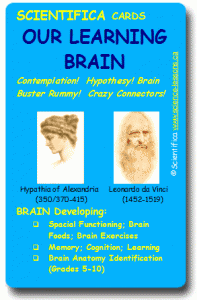 To Hypothesize; to speculate; to believe especially on uncertain or tentative grounds; the first step in the scientific process of providing proof of invented theory. To Think; Famous Genius Hypathia of Alexandria (350/370-415 A.D.) was noted for saying, “Reserve your Right to Think, for to think wrongly is far better than to not think at all”.Our awesome Science Learning Book Our Learning Brain is Now Available in Printed Book Full Color with Amazon Books.
To Hypothesize; to speculate; to believe especially on uncertain or tentative grounds; the first step in the scientific process of providing proof of invented theory. To Think; Famous Genius Hypathia of Alexandria (350/370-415 A.D.) was noted for saying, “Reserve your Right to Think, for to think wrongly is far better than to not think at all”.Our awesome Science Learning Book Our Learning Brain is Now Available in Printed Book Full Color with Amazon Books.
Our Learning Brain includes these 4 Great Games: Brain Buster Rummy; Crazy Connectors! (like Crazy 8’s); Contemplation! (like Solitaire and Patience); and Hypothesy! (An Old-Fashioned A & Q Game). Cards are similar to a traditional playing deck of cards, with 4 suits of 13 cards, all with different facts about each category; and 4 card games; Suitable for Grades 5-10. The games themselves, are easily comprehensible for the earlier grades, while the species identification aspects are brain teasers for the older grades.
CAUTION: Once Students begin, they cannot stop Playing!
Now Available in Printed Book Full Color with Amazon Black & White Version; Printed Book Form Amazon (Click on link for Book Form ordering)
Tasks include achieving Brain Anatomy Identification; Learning . All Science Activities and Games are designed to achieve Elementary and Junior High School Level Science Requirements also including aspects of Mathematics & Communication. Scientifically Proven to Increase Memory & Cognition; Understanding physical properties, structures and changes of Earth materials and Living Organisms and the properties of rocks, soil, water, and air; Identifying and categorizing living organisms; Understanding how components, structures, organizations, and interconnections describe systems; Adding, Reasoning, memory problem solving, and communication; Work collaboratively, find solutions and perform tasks…
And also available through our Blue Butterfly Books site!
Have a Very Merry Christmas! Happy Hannukah! and a Warm Wonderful Winter Solstice!
]]>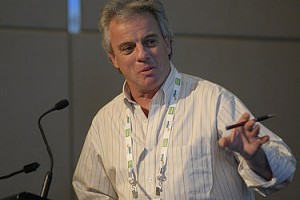 From mad scientists, to lunar landings, to outrageous weapons, science is gracing the big screen. But just what’s plausible, capable, or already happening?
From mad scientists, to lunar landings, to outrageous weapons, science is gracing the big screen. But just what’s plausible, capable, or already happening?
Join one of Canada’s best-known science journalists on November 22nd when the host of CBC’s Quirks & Quarks….http://thevic.ca/item/quirks-and-quarks
For more info about Bob McDonald’s CBC Radio show, visit here: http://www.cbc.ca/quirks/host/. Bob’s Book is entitled:
Measuring the Earth with a Stick: Science as I’ve seen it:
http://www.kidsbooks.ca/The-Quirks-&-Quarks-Guide-to-Space/Product.aspx?ProductID=121009&DeptID=0
http://www.cbc.ca/quirks/books/
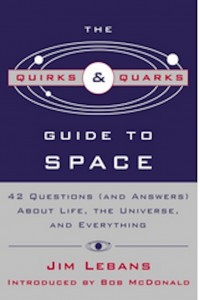 His book, which was short-listed for the Canadian Science Writers Association Book Award, is a collection of essays reflecting on his 25 years as a science journalist. Bob also hosted and wrote a children’s TV science series, Heads Up!, which ran for 3 seasons on TVO and the Knowledge Network. In addition, he is Chairman of the Board for Geospace Planetarium. Here is Bob’s Science Blog: http://www.cbc.ca/quirks/host/
His book, which was short-listed for the Canadian Science Writers Association Book Award, is a collection of essays reflecting on his 25 years as a science journalist. Bob also hosted and wrote a children’s TV science series, Heads Up!, which ran for 3 seasons on TVO and the Knowledge Network. In addition, he is Chairman of the Board for Geospace Planetarium. Here is Bob’s Science Blog: http://www.cbc.ca/quirks/host/
For info on Our Awesome Science Learning Lesson Plans, Games and Activities, feel free to visit here:
http://www.science-lessons.ca/lesson-plans/index.html
http://www.science-lessons.ca/games/brain.html
]]>
1. Sea Turtles live in all the world’s oceans except the ____________.
2. Adult Turtles swim in shallow lagoons, feeding mostly on various species of ______________.
3. Clownfish are native to the warm waters of the ___________ and __________ Oceans.
4. _________ have two stomachs and therefore can hunt for larger animals than their mouth could otherwise handle.
5. Angelfish are ____________ animals, because they hide amongst the crevices of the reef by night.
6. Through the 19th century, the word “kelp” was closely associated with seaweeds that were fired to obtain __________ (primarily sodium carbonate).
7. Manatees use taste and smell, in addition to sight, sound, and touch, to_________.
8. Salmon eggs usually range from _____________ in color.
9. Clownfish are one of the few fish that are safe from sea ______________.
10. The ___________ is a marine mammal, the heaviest member of the weasel family.
11. When eating, the otter first uses ___________ to dislodge prey and to open shells.
12. Seahorses have an equine profile, meaning they look sort of like ________.
13. ____________ have vibrant rainbow colors and deep, sideway-flat bodies.
14. Before spawning, salmon may grow a hump and grow canine teeth like a dog, developing a_______, a curve in the jaws.
15. Like___________ , anemones have stinging cells.
16. When a shark is resting, it does not use its nostrils, but rather, its___________, tiny holes behind each eye.
17. A _________tail is paddle-shaped.
18. ________ are large seaweeds belonging to the brown algae family.
19. _________ are pink and silver fish from the Atlantic and Pacific Oceans, and the Great Lakes.
20. Although corals can catch small fish and animals, they obtain most of their nutrients from photosynthetic unicellular_______.
21. __________ typically have five “arms” which radiate from a central disk.
22. __________ are slow-moving and live in warm, shallow, coastal waters, surviving above 15°C.
23. ____ ________ are related closely to coral and jellyfish.
24. _________ have proven problem-solving skills, social complexity and curiosity.
25. Coral have______ ; each one being like a tiny upside-down jellyfish with a shell.
26. ____ _______ “bob” around in sheltered areas such as sea grass beds, coral reefs, or mangroves.
QUIZ ANSWERS:
1. Arctic Ocean
2. Seagrass
3. Indian and Pacific
4. Sea Stars
5. Diurnal
6. soda ash
7. communicate
8. orange to red
9. Anemonae
10. sea otter
11. rocks
12. horses
13. Angelfish
14. Kype
15. Spiracles
16. jellyfish
17. manatee
18. Kelp
19. Salmon
20. algae
21. Starfish
22. Manatees
23. Sea Anenomae
24. Sharks
25. Polyps
26. Seahorses
If you really want to give yourselves an elementary science Brain-Squeeze this summer, here is an Oceans Quiz from National Geographics: http://ocean.nationalgeographic.com/ocean/ocean-extremes-quiz/
And Here is one from our classroom at Science-Lessons.ca: a 52-Card Playing Deck for Ocean Learning, includes 4 several games and completely downloadable for Print and Cut-out – Crazy Starfish! Go Snorkeling! Sea Cluster! and ?Hypothesy?: Ordering: Ocean Science: Ocean Creatures Playing Cards
Also, an updated and more improved version with Teachers Pay Teachers!
]]>Concretions are rounded rocks embedded in layers of stone in sedimentary rocks, often they are harder than the surrounding stone, and whether out of the host rock; http://www.rocksforkids.com/R&M/concretions.html#Septarian_Nodules. They are a hard mass of sedimentary rocked compacted tightly at one time, by way of the precipitation of mineral cement, that has grown spaces between the sediment grains – outward in 7 directions. The sedimentary rock nodules are kind of mineralized calcified encased “mud”, made up of calcite and ironstone. There are 2 basic stages of development that are shown in the photos here:(http://en.wikipedia.org/wiki/Concretion; Moeraki Boulders; Septarian Nodule; photos drawn March 17, 2014 ) caused by networks of cracks in which the minerals, usually calcite (CaCo3 – Calcium Carbonite – in the Periodic Table, Calcium, Carbon and Oxygen) been deposited into the solution before hardening. Prior to the depositing of minerals, the cavities are filled with ironstone; (Melody, EARTH-LOVE Publishing House; Love is In The Earth – Kaleidoscope pictorial, 1998; pp. 282-283).
On a metaphysical level, these beauties are said to filter dreams and keep only good ones around a person, such as is with dream catchers, and thus good to keep near a sleep space. Also used to facilitate neuro-linguistic programming, instilling patience, endurance and tolerance to a person; freedom of body movement supporting the body’s self-healing abilities. (Melody; 1998). Melody, a most fantastic source in the world of minerals and crystals, says it can be placed in the centre of Medicine Circles, facilitating Connection and Harmony.
Questions to ask Learners in your Classroom: What causes minerals to migrate to a centre and become harder? What are their true origins? Can you find septarian nodules in your backyard? Or are they only in one part area of the Earth?
For Fun Learning and Teaching activities and games, feel free to visit here:
http://www.science-lessons.ca/games/mammals.html
http://www.science-lessons.ca/games/space.html
http://www.science-lessons.ca/games/weather8.htm
http://www.literature-enrichment.com/
Interesting links from the Victoria Lapidiary Rock Show we visited:
Victoria Lapidiary and Mineral Society: http://www.islandnet.com/~vlms/.
Fossil Grotto: http://www.caves.org/grotto/ccg/um/2012_03_um.pdf.
Stone Haven Gems: http://www.stonehavengems.com/septarian-nodule-pebble/.
]]>
Making your own Orgonite Muffins are Easy to Make at in-class or at home, Materials needed are:
Beezwax or EcoEpoxy Resin
Large Stir Spoon
Small crystals, even the smallest is great
2 kinds of scrap metals such as copper shavings (look around in your Mom and Dad’s garage or ask your teacher or local welder for some scraps)
a bit of paper and tape
Muffin Pan
For more instructions, visit here: http://beeswax-orgone.com/make-an-orgone/; and here: http://www.orgonite.info/how-to-make-orgonite-hhgs.html.
Orgonite Generators are said to turn negative energy into positive energy, purify the atmosphere, detoxify water, ends drought, help plants grow better, repel pests, require less water, Inspire a pleasant demeanor and balanced, happier moods, and help awaken your innate senses. We first made one with paper and a bit of goldleaf, our compass, ruler and marker – drawing on the paper, a geometric flower of life, adding positive words. We felt it generating positive energy and so thought it was an orgonite generator. To truly test our generator we would have to first make a blank one with the gold, one with the flower of life, one with tiny words on it, and one without, and test each one in the garden to see if it attracts life, or if the flowers around it perk up! Then, to document all of that! But then, we read that Reich’s devices were said to “generate” only when in a container. Otherwise they only “accumulated” the energy – hence, we believe what we made is an orgone accumulator (adding together inorganic and organic materials). Besides not being contained in a container with beeswax or EcoEpoxy, ours only had one kind of metal, and had no crystals. So our next step is to make the Eco-Epoxy muffins!
Here is a photo of one of Reich’s generators designed to do cloudbusting and make rainfall. (Photo: Extracted January 28, 2014 from: www. Wikipedia. Org / wiki / orgone.) People who make homemade orgonite generators have we believe, good intentions – putting positive feelings into our environments. Though, unfortunately, most generators have been made with epoxy fiberglass resin, that is reportedly not very good at all for the environment, in general. Thus, our personal concern is whether crystals “like” being encapsulated in epoxy (as it is also apparent that crystals are living and have feelings! Our sense is they would not like being encapsulated in a non-eco-friendly substance. So…..we searched and found alternatives that are earth-friendly. 3 Eco-alternatives:
1. Beeswax. Yellow Gold in color. http://beeswax-orgone.com/make-an-orgone/.
2. EcoEpoxy. Clear in color and others. http://www.earthsafefinishes.com/EcoEpoxy.html.
3. Ecopoxy. Amber in color. http://ecopoxysystemscanada.com/.
http://www.westwindhardwood.com/products/ecopoxy/intro.php.
Our friend who makes generators at home, says, if you are wondering if an orgone device works or not try testing it on something that can re-act to your orgone device like a plant or lizard or other animal. Testing may take minutes, hours, days or a week for optimal results. Try taking digital pictures of the subject being tested to document it. He says his generators makes his plants grow faster and greener and attracts interesting wildlife like frogs and lizards. He also writes words on his like Love Peace Harmony Compassion Forgiveness Happiness and Oneness.
And we like this person’s Kirlian photos (infrared photo-technology), also forwarded to us by our friend Kevin. Way cool. http://www.orgoniseafrica.com/blog/improving-orgonite. Are we, as human beings, orgonite generator? If we have contained within our bodies, more than one metal, organic and inorganic material, would we not also orgonite generators? We would say yes, to an extent, though we do not contain non-carbon based crystals. Crystals, are a different kind of life form on Planet Earth. What about if wear a crystal, then? Hmmmmm. Good Science Questions. Be sure and clean and care for your crystal, if you choose to wear one. We believe Crystals have Feelings too!
Other sources of information on Orgone Generators:
For more interesting and Fun Science Activities and Games, feel Free to visit:
http://www.science-lessons.ca/games/weather3.html
http://www.science-lessons.ca/games/brain.html
http://www.science-lessons.ca/games/space.html
http://www.science-lessons.ca/games/ocean.html
]]>
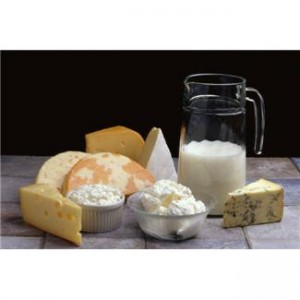 In chemistry, the term physical change implies that a substance is changing form, like when water freezes to form ice. The water has not changed its identity, only its appearance from a liquid to a solid. Physical processes like shaking, hitting or even chewing can help things change their form. For example, when we chew our food, chewing (a physical process) helps us to make food easier to swallow by making it into a liquid. In this activity students will use shaking (a physical process) to transform a liquid (heavy whipping cream) into a solid.
In chemistry, the term physical change implies that a substance is changing form, like when water freezes to form ice. The water has not changed its identity, only its appearance from a liquid to a solid. Physical processes like shaking, hitting or even chewing can help things change their form. For example, when we chew our food, chewing (a physical process) helps us to make food easier to swallow by making it into a liquid. In this activity students will use shaking (a physical process) to transform a liquid (heavy whipping cream) into a solid.
In this activity, students will observe how physical processes like shaking can cause things to change. Materials:
Small glass jar with lid (baby food jars are the best)
Heavy whipping cream
Instructions: 1. Fill each jar about three-quarters of the way full.
2. Tightly seal each jar with its lid.
3. Shake the jar for 10-15 minutes or until the whipping cream has solidified.
How It Works: When the jar is shaken the particles are forced close together. A few particles clump together and soon, with all the shaking more and more particles clump together until most of are in a solid.
Discussion Questions to Ask: What did we add into the jar?
- What did we do to change the heavy whipping cream?
- When was the whipping cream a liquid?
- When was the whipping cream a solid?
Did you know that cooking is a chemical and a physical process? Exploring other food processes like making cheese, baking bread, even making a cake are easy ways to introduce the concept of physical and chemical changes. Chemistry is not just only in the lab or taught during science class. It is important to help young students recognize chemistry concepts inside and outside of the classroom. For more information on how to teach young students about chemical and physical change, visit: http://acswebcontent.acs.org/scienceforkids/index.html#Reactions
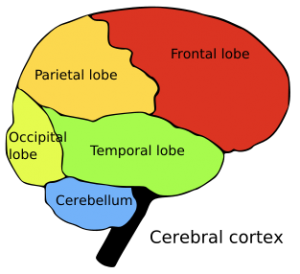 For some of our Fun Learning Science games such as How to Become a Teenage Genius by playing Our Learning Brain, you can visit here:
For some of our Fun Learning Science games such as How to Become a Teenage Genius by playing Our Learning Brain, you can visit here:
http://www.science-lessons.ca/games/brain.html
http://www.science-lessons.ca/games/forceenergy.html
http://www.science-lessons.ca/games/weatherbingo4.html
http://www.literature-enrichment.com/
]]>
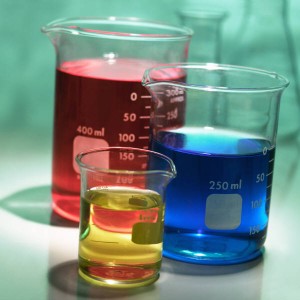
School is Back in Full Swing and so is our Learning Fun in Elementary Science! This activity can be done at home or in school but be careful with the pepper – it can make you sneeze and should never be put near the eyes! Have fun!
Pepper and Water Chase:
Not all liquids can be mixed together. Oil and vinegar are insoluble, meaning they do not mix together. Liquids that do not mix well together will try hard to separate into layers to form what chemist call a suspension.
In this activity students will observe two insoluble liquids and how they react around when mixed with each other.
Materials:
Milk & Food Coloring
Water & Pepper
Liquid Dish Soap
Flat pan with sides (cake pans work great)
Toothpicks
Instructions:
- In the pan add about a half-inch of milk to cover the bottom of the pan.
- Add several different colored drops of food coloring.
- Dip a toothpick into the liquid soap; be sure to make sure any excess soap drips are removed. There should be some soap on the tip of the toothpick.
- Place the toothpick (with the end with the soap first) in the center of the pan and watch the milk and food-coloring move.
(The milk may begin to swirl as it continues to try to move away from the soap on the toothpick). You can repeat this same activity using water and pepper. Placing the water and pepper in the pan and using a toothpick with liquid soap to make the pepper scatter.
How It Works:
The soap is made up of water and soap particles. In the milk the fat particles are hydrophobic meaning they do not like water and want to move away from the water in the soap. This is what is observed when the colors spread and the milk moves away from the soap on the toothpick. As the fat molecules in the milk continue to move away from the soap, they take the colors with them and form a swirling mixture of colors.
When teaching chemistry concepts that involve new vocabulary, it is helpful to create flashcards that can be posted in the classroom to reinforce the new word. For this activity, you can take a picture of the mixture, to remind the students about how insoluble mixtures do not mix or have a picture of an oil and water mixture. Science should not be a standalone topic, but instead can be incorporated in language and in math. To read more about integrating math into science, visit: http://www.edutopia.org/blog/integrating-math-science-creatively-ben-johnson
For Our Fun Learning Game about other great science activities, you can visit here!
http://www.science-lessons.ca/games/mammals.html
http://www.science-lessons.ca/games/space.html
http://www.science-lessons.ca/games/weather8.htm
http://www.literature-enrichment.com/
]]>
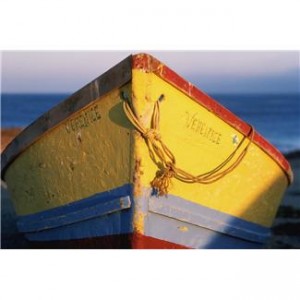 A boat is able to float based on the amount of water it displaces or moves out of the way. When a boat pushes against the water, the water pushes back with an equal amount of force. Therefore, a wider boat is able to carry a heavier load than a long, narrow boat. Wider boats displace more water and therefore are held up by a greater water force, enabling them to carry heavier loads.
A boat is able to float based on the amount of water it displaces or moves out of the way. When a boat pushes against the water, the water pushes back with an equal amount of force. Therefore, a wider boat is able to carry a heavier load than a long, narrow boat. Wider boats displace more water and therefore are held up by a greater water force, enabling them to carry heavier loads.
In this activity students will experiment with how much weight a boat can hold depending on the size of the boat.
Materials:
Large pan with water
Toy boats (various sizes)
Pennies (or other coins)
Instructions:
- Place the boat in the water. Allow students to interact with the boat, seeing that it floats when placed in the water.
- Add pennies to the boat, counting how many are added before the boat sinks.
- Repeat this with each type of boat and compare how the boats differ in size, shape, and the amount of pennies they can hold.
Discussion Questions to Ask:
- What did the boats do when placed in the water?
- How many pennies do you think each boat can hold? Which boat held more pennies?
- If you had to make a boat to carry a heavy load, what shape and size boat would you make?
When teaching concepts related to density, it is best practice to allow students to experiment with different shapes and sizes of objects. Encourage students to explore how long objects can float before sinking, or how long it takes an object to sink when placed in the water. Finding ways to connect the activity to the students’ current interests is a great way to keep young students especially interested in the topic. Additionally, finding ways that this activity relates to the real-world is a great way to extend the science learning beyond the classroom. Looking at how large ships carry cargo, or how small ships can zip through the water very quickly, are easy ways to show how this lesson of buoyancy is applied in everyday life. For more fun buoyancy teaching tips, visit: http://bit.ly/ZrmMgg
For Our Fun Learning Games about other great science activities, you can visit here!
http://www.science-lessons.ca/games/mammals.html
http://www.science-lessons.ca/games/space.html
http://www.science-lessons.ca/games/weather8.htm
]]>
In this activity students will explore how crystals are made.
Materials:
Measuring cups (1/2 cup)
Tablespoons
Alum (spice can be found at grocery store)
Instructions:
- Add ½ cup of hot water to 2 ½ tablespoons of alum.
- Crystals will form within 30 minutes.
- Want bigger crystals add more alum to the water.
How It Works:
When the alum and water mix, the alum begins to accumulate in clusters and as the warm water evaporates, it leaves the lumped crystals behind. The alum forms not just a solid, but a solid with a repeating pattern, making a crystal.
Discussion Questions to Ask:
- How did were the crystals made?
- What characteristics do the crystals have?
There are many places where crystals grow in nature, like ice crystals are often formed in the winter, in colder climates as the liquid molecules freeze. Also in caverns, there are stalagmites and stalactites that are crystals of calcium carbonate. When teaching concepts like crystals, young students may become bored as the formation of the crystal may take longer than one class period. To keep the students’ attention, incorporate crystals-related activities in other areas, i.e. math (counting or matching crystals), art, geography (where do crystals form in nature), even in physical education (students can pretend to be frozen crystals and play tag). It is best to start this activity and others that take more than one day on a Friday, that way when the students return on Monday the process is complete. For other science teaching tips related to crystals, visit: http://bit.ly/10l3FXy
And for other Fun Learning Science Games, we invite you to visit here:
http://www.science-lessons.ca/games/ocean.html
http://www.science-lessons.ca/games/space.html
]]>